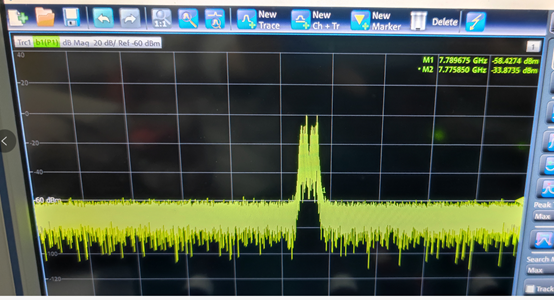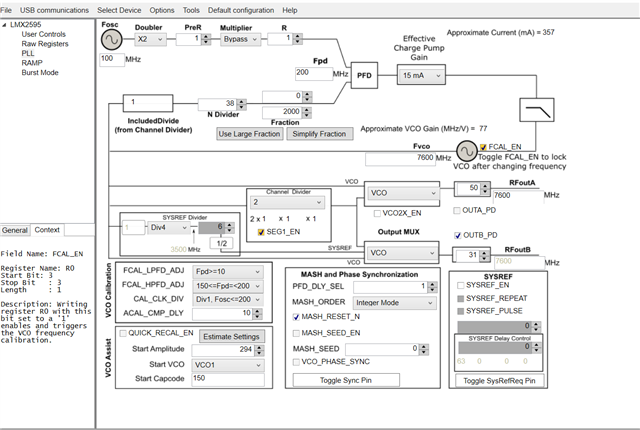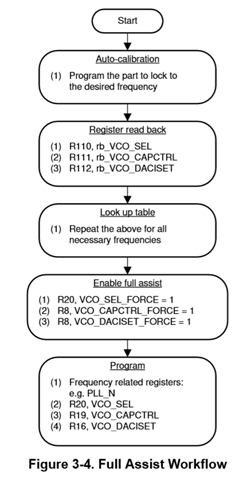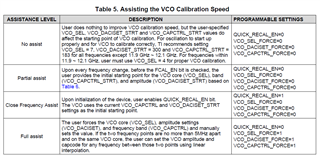Hello, I have another question. Now I use full assist mode and jump the frequency from 7.6GHz to 7.8GHz. My question is, the frequency jumping failed and below is the output. The power is even below 0dbm.

Here's my progress.
1. Program RESET = 1 and then program RESET = 0;
2. Program registers as shown in the register map in REVERSE order from highest to lowest.
3. Wait 10ms
4. Program VCO DACISET and VCO CAPCTRL to the values that the first frequency acquired , and program VCO_SEL_FORCE, VCO_DACISET_FORCE, VCO_CAPCTRL_FORCE to 1
5. Program FCAL_EN = 1.
6.

1) Disable CPG.(set CPG to 0)
2) Program N divider from 38 to 39.
3) Program VCO_SEL, VCO DACISET, VCO CAPCTRL that the second frequency acquired.
4) Enable CPG.(set CPG 15mA again)
7. Program FCAL_EN = 1.

Is there any thing wrong with my flow in full assist mode? Or are there any docs about changing frequency in full assist mode that I can refer to? Thank you!





